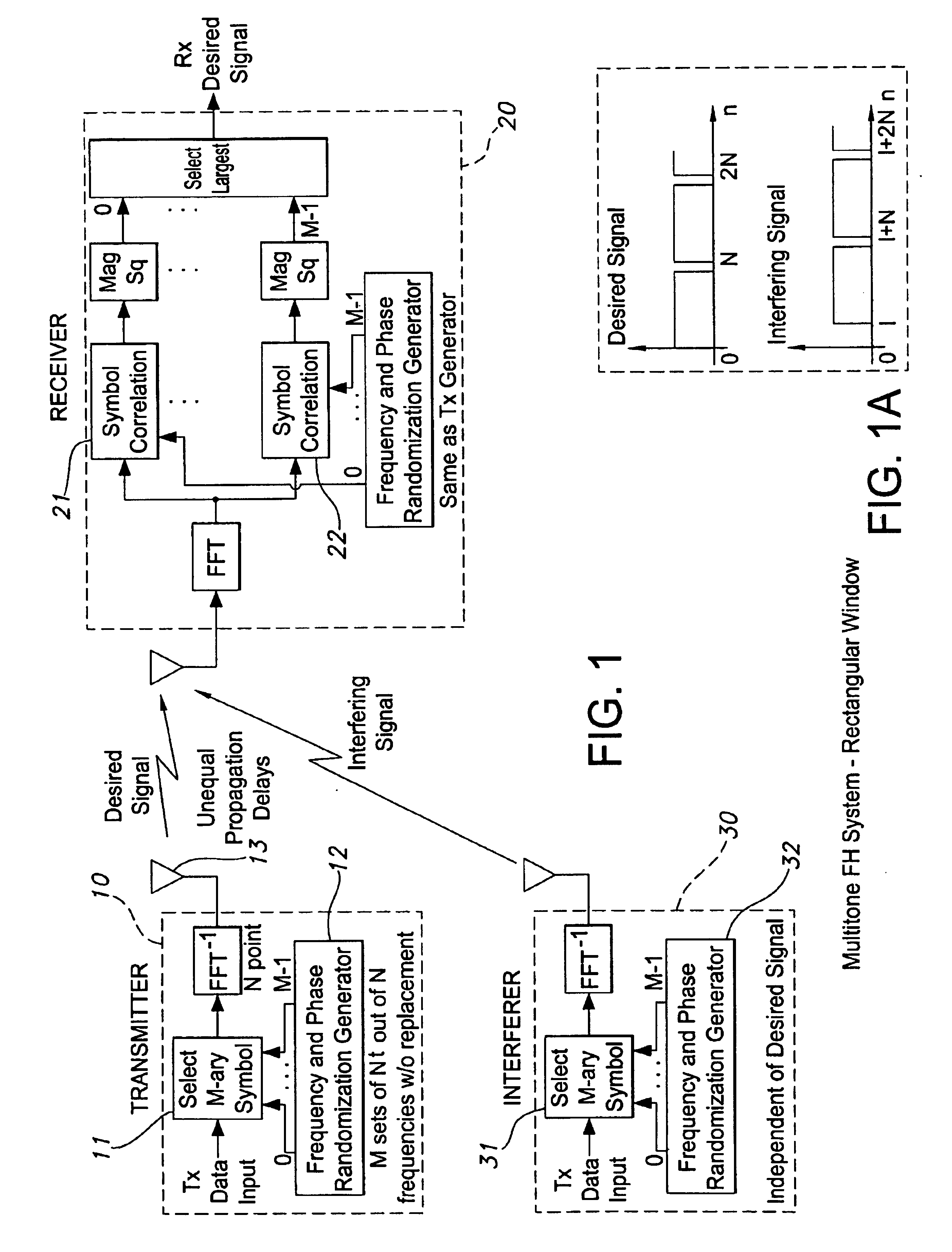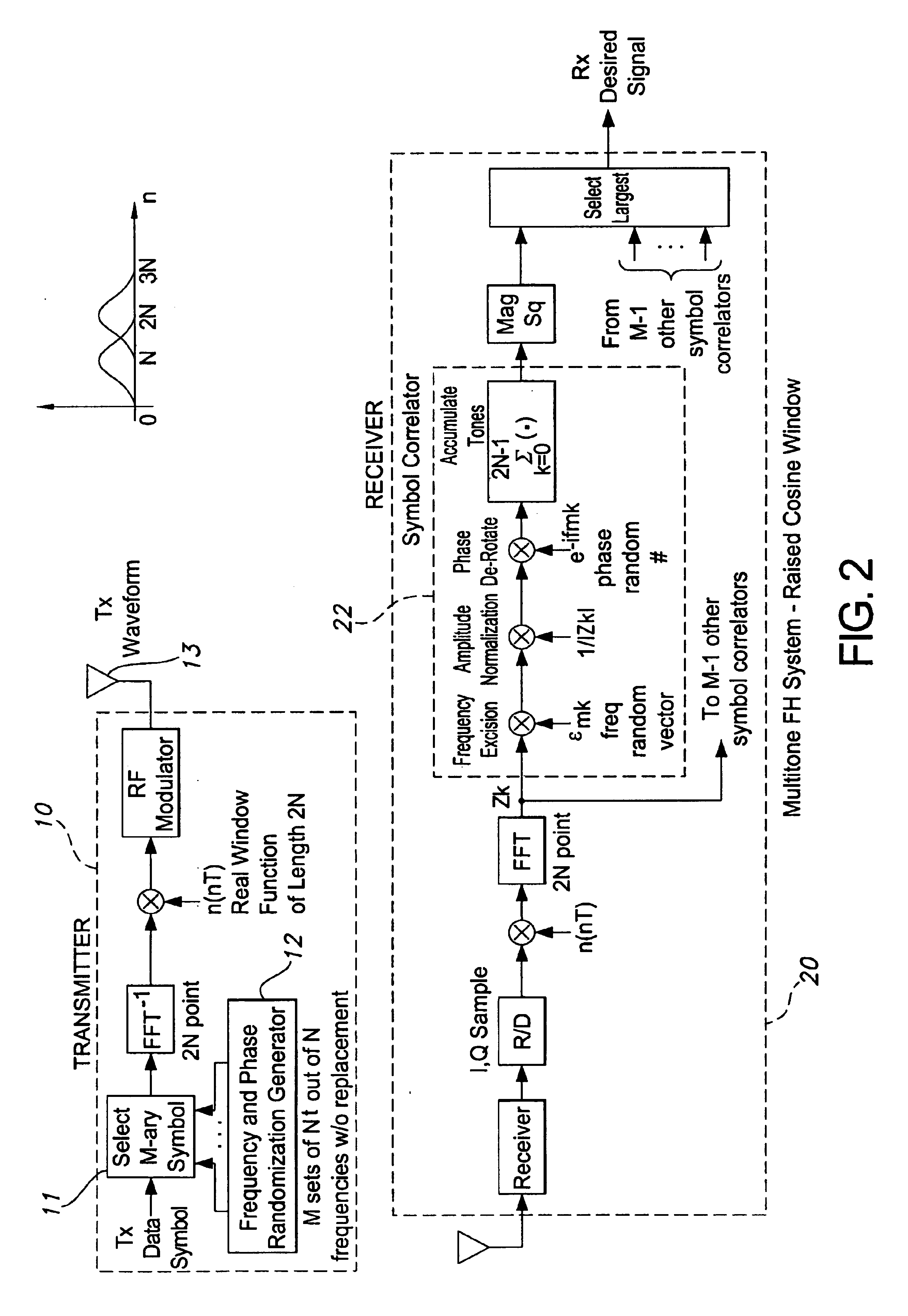Multitone frequency hop communications system
a multi-frequency hop and communications system technology, applied in the direction of transmission, electrical equipment, etc., can solve the problem that the multi-frequency hop uses only a relatively small fraction of the available tones, and achieve the effect of low probability of interception
- Summary
- Abstract
- Description
- Claims
- Application Information
AI Technical Summary
Benefits of technology
Problems solved by technology
Method used
Image
Examples
Embodiment Construction
[0030]FIG. 1 shows an embodiment of the multitone frequency hop system in which a receiver 20 receives both a desired signal from transmitter 10 and an interfering signal from transmitter 30, both transmitters being of the same type but with different waveform randomizations. Transmitter 10 sends a sequence of M-ary data symbols corresponding to digitized input data where each symbol represents one of the M possible states of the input data. At each successive timing interval for the transmitter, as determined by well-known timing methodologies, the data symbol to be transmitted (and corresponding to the increment of digitized input data to be transmitted during that timing interval) is selected by selector 11. Each of the M-ary data symbols is coded during a given timing interval by selecting Nt tones out of a set of N available tones. The frequencies of the Nt tones representing each of the M-ary data symbols are pseudo-randomly chosen by frequency and phase randomization generato...
PUM
 Login to View More
Login to View More Abstract
Description
Claims
Application Information
 Login to View More
Login to View More - R&D
- Intellectual Property
- Life Sciences
- Materials
- Tech Scout
- Unparalleled Data Quality
- Higher Quality Content
- 60% Fewer Hallucinations
Browse by: Latest US Patents, China's latest patents, Technical Efficacy Thesaurus, Application Domain, Technology Topic, Popular Technical Reports.
© 2025 PatSnap. All rights reserved.Legal|Privacy policy|Modern Slavery Act Transparency Statement|Sitemap|About US| Contact US: help@patsnap.com



